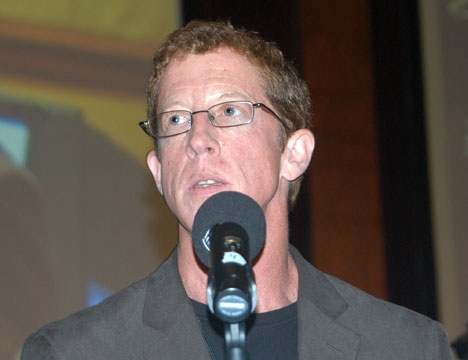 The Rev. Drew Phoenix of Baltimore is back in the news, as the United Methodist Church tiptoes back into the minefield of human sexuality.
A recent Religion News Service story by Daniel Burke deals with some of the theological issues involved in this fight over the status of a transgendered pastor, quoting generic, anonymous doctrines on the right that are clashing with scores of living human beings on the left. It's a strange balance that sounds something like this:
The Rev. Drew Phoenix of Baltimore is back in the news, as the United Methodist Church tiptoes back into the minefield of human sexuality.
A recent Religion News Service story by Daniel Burke deals with some of the theological issues involved in this fight over the status of a transgendered pastor, quoting generic, anonymous doctrines on the right that are clashing with scores of living human beings on the left. It's a strange balance that sounds something like this:
Conservative Christians tend to treat transgenderism as an extreme form of homosexuality. It's a disorder to be overcome, a cross to be borne. Christians and Jews have traditionally derived fixed notions of gender from the Hebrew Bible, when God creates Adam and Eve. To mess with that, some argue, is to mess with God's plan for creation.
Other conservatives point to Deuteronomy, which says, "The woman shall not wear that which pertaineth unto a man, neither shall a man put on a woman's garment; for all that do so are abomination unto the Lord thy God."
"There's the issue of what's God's intention for us," said the Rev. David Simpson, a United Methodist pastor from the Baltimore suburb of Ellicott City, who challenged Phoenix's reappointment. "Is that something that we get to choose?"
On the other hand, some medical professionals and transgendered people say gender identity and sexual orientation are separate things.
"It's not about whom I love," Phoenix said. "It's about who I am."
This is the issue that makes headlines and that is to be expected. However, I find myself curious about another issue -- the status of St. John's United Methodist Church itself. Here is the key description of this unique little congregation:
The 40-odd members of St. John's, who say they pride themselves in being the most accepting and inclusive Methodist church in Baltimore, said their minister's sex change was no big deal. They had some questions, which Phoenix answered in individual meetings, but no large theological hang-ups.
"It was like, 'OK, great, congratulations. You're living as God intended now, how wonderful,'" said Kara Ker, 33, a social worker and lifelong Methodist. "Every now and then people struggle with the pronouns, that's the biggest challenge."
 And later we have this description:
And later we have this description:
The congregation at St. John's say they would be devastated if they lost Phoenix, whom they describe as the beating heart at the center of their growing church. When Phoenix started five years ago, eight people showed up for Sunday worship; now 40 do. But the pastor said he's prepared for whatever happens.
As Phoenix began to preach on a recent Sunday, beneath the huge cross and beside the posters proclaiming "This Ain't Your Daddy's Church," he told the Gospel story about Jesus and the 10 lepers.
After Jesus heals the lepers, he tells them to visit the priests and get certified for temple life. One, a Samaritan, realizes he's been healed and turns back to thank Jesus.
"The Samaritan realizes he's already recovered what most matters," Phoenix told his church, "not certification, but his own healing."
This raises several questions for me.
Baltimore is a very mainline and Catholic town, known as a center for progressives and social activism when it comes to religion. I mean, I live in Baltimore and, when it comes to religion, this is not Colorado Springs or Dallas, folks.
So why does the most "accepting and inclusive" congregation in a mainline, liberal town have only 40 members? Who is being accepted and who is choosing not to attend? The story mentions Phoenix's skill at youth ministy. But how many young people and children are there in a congregation with 40 members, especially in light of the aging demographics of mainline churches in this region?
Here's another question to explore. It is a rule of thumb that it takes somewhere between 80 and 120 serious, active members to donate enough money to pay the salary and the benefits of a full-time pastor in a mainline church. How is this congregation managing to pay the bills and the upkeep on its old sanctuary? Are other United Methodist congregations, in any way, helping out financially as a way of supporting the cause?
In other words, there are several interesting stories here about the intersection of several different issues in the world of oldline, mainline, Protestantism.
